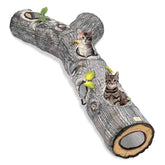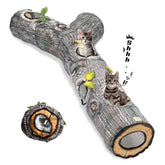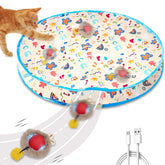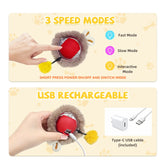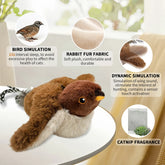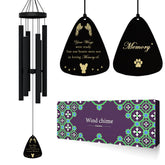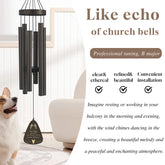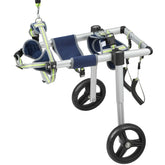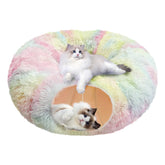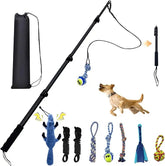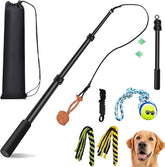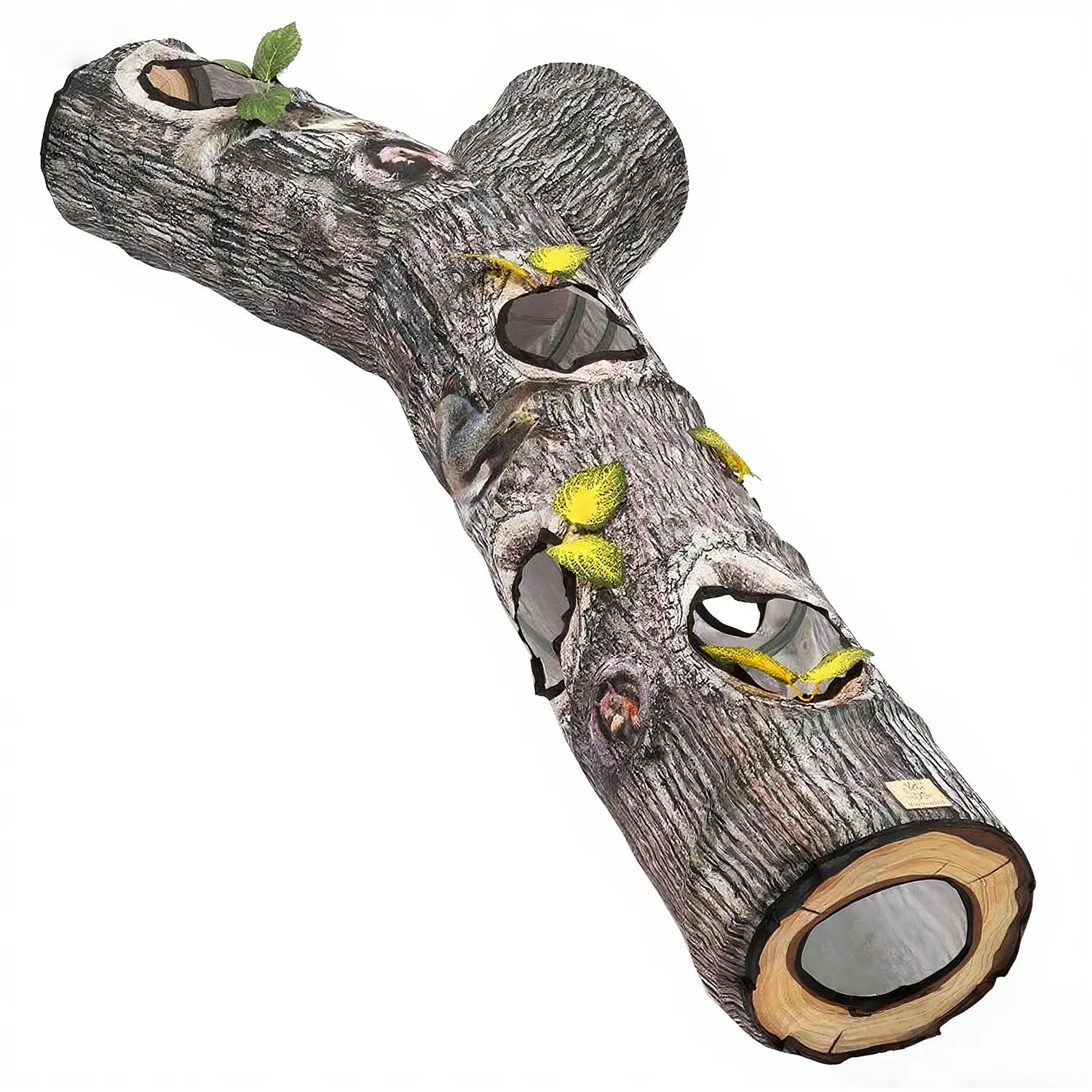Top Benefits of Using a Herding Ball for Dogs at Home
Understanding the Herding Ball for Dogs
When it comes to canine entertainment and exercise, herding balls for dogs stand out as a versatile option that satisfies both physical and mental stimulation needs. These robust, oversized spheres were originally designed for livestock animals but have found their niche in the dog toy market. Unlike standard tennis balls or frisbees, herding balls capitalize on a dog's natural instinct to chase, nudge, and control moving objects—an instinct particularly pronounced in herding breeds like Border Collies, Australian Shepherds, and Blue Heelers.
The quintessential herding ball features a durable construction, typically fashioned from heavy-duty plastic or rubber compounds that withstand the rigors of enthusiastic play. Their substantial diameter—ranging from 10 to 30 inches—prevents dogs from grasping them with their jaws, instead encouraging nose-nudging and paw manipulation. This distinctive interaction pattern mimics herding behaviors, providing an outlet for breeds with strong herding proclivities.
The Evolution of Herding Balls
The genealogy of herding balls traces back to agricultural settings where they served as training implements for working dogs. These canines were tasked with maneuvering livestock through farmlands by applying pressure and directing movement—skills that translate seamlessly to interactions with these specialized balls. The contemporary iteration of herding balls has been refined to appeal to domestic dogs, featuring enhanced durability and safety considerations while preserving the fundamental mechanics that trigger a dog's herding instincts.
Modern variants incorporate anti-burst technology, UV-resistant materials, and puncture-resistant surfaces, ensuring longevity even under vigorous play conditions. Some manufacturers have introduced textured surfaces or subtle handle indentations to facilitate both canine engagement and owner handling. This evolution reflects a nuanced understanding of canine psychology and play behaviors, resulting in a toy that resonates with dogs' innate drives while meeting pet owners' expectations for durability and value.
Benefits of Herding Balls for Canine Well-being
Integrating a herding ball into your dog's toy repertoire yields multifaceted benefits that extend beyond mere entertainment. These specialized toys serve as catalysts for comprehensive physical exercise, engaging multiple muscle groups as dogs push, chase, and navigate around the substantial sphere. The cardiovascular workout derived from herding ball sessions contributes significantly to weight management and overall physical fitness.
Beyond the physical dimension, herding balls present cognitive challenges that stimulate problem-solving capacities. Dogs must calculate trajectories, anticipate movement patterns, and develop strategies to control the ball's path—mental gymnastics that combat boredom and potential behavioral issues stemming from understimulation. For high-energy or working breeds, this mental engagement proves particularly valuable in channeling innate drives constructively.
Physical Exercise and Energy Release
The kinetic interaction with herding balls activates major muscle groups throughout a dog's body. The pushing motion engages shoulder and chest muscles, while the running and maneuvering components provide comprehensive leg and core exercise. Unlike fetch games that involve repetitive throwing motions, herding ball play encourages sustained, varied movement that builds endurance and strength without overtaxing specific joints.
For dogs prone to excess energy or restlessness, regular sessions with a herding ball facilitate healthy energy expenditure. The intensity of play can be modulated according to individual needs—from gentle nudging in confined spaces to vigorous chasing across open areas. This adaptability makes herding balls suitable for dogs across age ranges and fitness levels, though the play style naturally evolves with the dog's capabilities.
Mental Stimulation and Behavioral Benefits
The cognitive component of herding ball interaction should not be underestimated. Dogs engage in tactical thinking as they attempt to control the ball's movement, developing anticipatory skills and spatial awareness. This mental stimulation serves as an antidote to destructive behaviors often rooted in boredom or cognitive understimulation.
For breeds with strong herding instincts, these balls provide a constructive outlet for behaviors that might otherwise manifest problematically in domestic settings. The satisfaction derived from successfully "herding" the ball fulfills deep-seated psychological needs, potentially reducing inappropriate herding behaviors directed at household members, other pets, or moving objects like cars and bicycles.
"Providing appropriate outlets for breed-specific behaviors is essential for a well-balanced dog. Herding balls allow dogs to express natural instincts in a controlled, positive manner that benefits both the animal and their human family." - Dr. Emma Richardson, Canine Behavioral Specialist
Selecting the Ideal Herding Ball
Navigating the selection process for a herding ball requires consideration of several key factors to ensure optimal match between the toy and your dog's specific needs. Size calibration stands as the foremost consideration—the ball should be large enough to prevent your dog from grasping it with their mouth, yet manageable enough for effective maneuvering. As a general guideline, the ball's diameter should exceed the length of your dog's muzzle by at least several inches.
Material composition represents another crucial decision point. Premium herding balls utilize high-density polyethylene, industrial-grade PVC, or specialized rubber compounds engineered for durability. These materials offer resistance to canine teeth while maintaining sufficient pliability to prevent injury during vigorous play sessions.
Size and Material Considerations
The correlation between dog size and appropriate ball dimensions follows a logical progression: small to medium breeds typically engage best with herding balls measuring 10-14 inches in diameter, while larger dogs benefit from balls in the 14-30 inch range. Weight constitutes an often-overlooked variable—heavier balls provide greater resistance and challenge, while lighter options facilitate easier movement for less powerful dogs.
Material selection should align with your dog's play style and environmental conditions. For aggressive chewers or dogs with formidable jaw strength, industrial-grade plastic with reinforced construction proves most suitable. Dogs that play predominantly outdoors benefit from UV-resistant materials that withstand solar degradation, while indoor players might prefer slightly softer compositions that minimize household impact damage.
The Felrelwel Herding Ball exemplifies thoughtful design in this category, incorporating puncture-resistant technology with an optimized diameter suitable for multiple dog sizes. This purpose-engineered toy addresses the specific requirements of herding-oriented play while ensuring durability under demanding conditions.
Durability and Safety Features
Investment in a quality herding ball necessitates scrutiny of durability indicators and safety elements. Premium options feature anti-burst construction that maintains structural integrity even when punctured, preventing sudden deflation that could startle dogs or create choking hazards from fragmented pieces. Seamless molding techniques minimize weak points that might deteriorate under persistent pressure.
Safety-conscious designs incorporate non-toxic materials certified for pet use, free from harmful chemicals like BPA, phthalates, or lead. Smooth, rounded surfaces minimize abrasion risks to paws and gums during play, while specialized texturing provides traction without introducing sharp edges. Some manufacturers employ antimicrobial treatments that inhibit bacterial growth on the ball's surface—a valuable feature for toys frequently exposed to outdoor environments.
Introducing Your Dog to Herding Ball Play
The introduction process demands patience and methodical progression to cultivate enthusiasm while establishing appropriate play patterns. Initial encounters should emphasize familiarization rather than active play—allow your dog to inspect the ball at their own pace, forming positive associations through verbal encouragement and occasional treats. Demonstrate basic interaction by gently rolling the ball, inviting investigation without pressure to perform.
For dogs exhibiting hesitation, consider incorporating the ball into everyday scenarios without explicit play expectations. Position it in familiar areas, perhaps applying appealing scents or placing favorite treats nearby to create positive connections. This gradual acclimation proves particularly valuable for timid dogs or those without strong herding tendencies.
Training Techniques and Commands
As comfort levels increase, introduce basic directional commands that facilitate structured play. Simple cues like "push," "bring," or "around" can shape interaction patterns and enhance the cognitive benefits of herding ball engagement. Consistent terminology paired with immediate positive reinforcement establishes clear communication channels and elevates the play experience beyond mere physical activity.
Consider these progressive training steps:
- Begin with the "touch" command, rewarding nose contact with the stationary ball
- Graduate to "push" instructions, encouraging deliberate movement of the ball over short distances
- Introduce directional concepts—"left," "right," "around"—to develop precision control
- Advance to complex sequences combining multiple commands in succession
- Eventually incorporate distance work, with commands issued from progressively greater removes
Creative Play Ideas for Herding Balls
Expanding beyond basic chase interactions unlocks the herding ball's full potential for engagement and stimulation. Creative play scenarios maintain interest while targeting specific physical and mental development areas. Consider establishing makeshift obstacle courses where the ball must be navigated through cones, between poles, or along designated pathways. This structured challenge enhances directional control and precision movement while providing measurable progress indicators.
For multi-dog households, supervised competitive herding games can foster positive socialization while channeling potential rivalry into structured play. Designate "zones" where each dog must guide their ball, or create relay-style activities that encourage cooperation and turn-taking. These social dimensions add complexity and variation to the basic herding experience.
Frequently Asked Questions About Herding Balls
| Question | Answer |
|---|---|
| Can non-herding breeds benefit from herding balls? | Absolutely. While herding breeds demonstrate natural affinity, most active dogs enjoy and benefit from the physical and mental stimulation these toys provide. |
| How long should play sessions last? | Start with 5-10 minute sessions, gradually increasing to 15-20 minutes as endurance builds. Monitor for signs of fatigue or overexertion. |
| Are herding balls suitable for indoor use? | Smaller versions can work in spacious homes, but these toys achieve optimal functionality in outdoor settings with adequate room for movement. |
| How should herding balls be cleaned? | Most respond well to gentle scrubbing with mild soap and water. Avoid harsh chemicals that might degrade materials or leave residues harmful to dogs. |
Maintaining and Storing Your Herding Ball
Proper maintenance protocols significantly extend a herding ball's functional lifespan. Establish regular inspection routines to identify early signs of wear, particularly examining for punctures, cracks, or abnormal deformation. Prompt attention to minor damage can prevent catastrophic failure and potential safety hazards. For balls with small punctures, specialized repair kits designed for similar recreational equipment often provide effective solutions.
Environmental conditions impact longevity considerably. Extended exposure to extreme temperatures—whether intense heat or freezing conditions—can compromise material integrity over time. Similarly, constant UV radiation accelerates degradation of most plastics and rubber compounds. Implement storage practices that minimize these environmental stressors when the ball isn't in active use.
Cleaning and Inspection Protocols
Develop a consistent cleaning regimen tailored to your usage patterns. For balls primarily used outdoors, rinse thoroughly after each play session to remove dirt, grass, and environmental contaminants. Periodic deep cleaning with diluted dog-safe disinfectant addresses microbial buildup without introducing harmful residues. Allow complete drying before storage to prevent mildew development, particularly in textured surface areas that might trap moisture.
During cleaning sessions, conduct comprehensive examinations for integrity issues. Pay particular attention to areas experiencing maximum stress during play—typically around any seams, valve mechanisms, or textured regions. Early identification of potential failure points allows for preemptive intervention before safety becomes compromised.
By incorporating these maintenance practices, your investment in a quality herding ball translates to countless hours of beneficial play while minimizing replacement costs and ensuring consistent safety standards.
